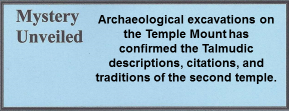02.02.26 Talmud. The term Talmud refers to two sets of writings that reflect Jewish philosophy and theology: The Babylon Talmud and the Jerusalem, a/k/a Palestinian Talmud.[1] Of the two Talmuds, the Babylonian edition is considered to be the authoritative one as it offers a broader scope in discussions and its themes are richer and cover longer periods of time. Over the centuries, it became the more popular because it was more challenging and interesting for rabbinic study. It was completed around the year A.D. 500 and contains 5,894 large pages (27 x 36 cm.) while the Jerusalem Talmud, completed a century earlier, has only 574 pages.[2] Hence, the Babylonian Talmud is used almost exclusively in biblical research and whenever a reference is given to the “Talmud,” the reference is to the Babylonian edition.[3]
The Babylonian Talmud is essentially the interpretation and elaboration of the Mishnah as it was taught in the Jewish academies in Babylon. Because the Jews had been removed from Jerusalem and the land of Judea in 586 B.C., they strove to insure that the laws were carefully followed and preserved. This was especially significant since the priesthood in Jerusalem had a renowned reputation of corruption, so Greek influences were removed. It incorporates the teachings from Jewish sages who lived from 20 B.C. to A.D. 450. This Talmud illustrates two interesting features:
- It presents insights of the Jewish legal system prior to the destruction of the temple that enhances our understanding of the cultural environment of Jesus. An example of Talmud’s historical value is found in the story Jesus told about the persistent widow and unrighteous judge (Lk. 18:1-8).
- It discredits the argument that since it was written at a late date it should be discredited as a source for biblical study on Jewish life and culture. Another example of the value of the Talmud was revealed in the early 1960s. Archaeologist Yigael Yadin was excavating Masada when he discovered what he thought was a ritual bath known as a mikvah (see Glossary). When the dimensions and description were compared with requirements of the Talmudic law, there was no question of its identity. He had discovered the first mikvah in modern Israel.[4] Since then, hundreds have been excavated.
Some scholars believe that since the Babylon Talmud was compiled around the year 500, and the Jerusalem Talmud about a century earlier, both sources are far too late to have any significant value concerning the study of the Second Temple Period. Their reasoning is logical, but they do not fully comprehend the Jewish tenacity to preserve the Judaism of the Second Temple. Consider the following:
- Josephus, writing at the end of the first century, presented considerable details of the temple in his two books, Antiquities of the Jews, and Wars of the Jews.
- The two Talmudic books also have considerable details of the temple, and these details are nearly identical to those of Josephus.[5]
Note the following comments about the Babylonian Talmud were found on a Jewish website:
- “The Talmud is, then, the written form of that which in the time of Jesus was called the Traditions of the Elders” by Rabbi Michael L. Rodkinson.[6]
- “The Jewish religion as it is today traces its descent, without a break, through all the centuries, from the Pharisees” by the Universal Jewish Encyclopedia.[7]
Therefore, the accuracy of Jewish writings concerning the temple can be considered to be as passionate as translating the Hebrew Bible into Aramaic,[8] where a translator was considered to be a traitor if he translated accurately but failed to convey the full meaning of the biblical passage.[9] Furthermore, archaeological research on the Temple Mount in the past 30 – 40 years has further reinforced literary Talmudic data, and has not contradicted Talmudic descriptions, citations, or descriptions of the Second Temple Period.[10]

Finally, both editions have some legends, myths, and fictitious charges against Jesus but also contain condemnations against former Jewish leaders. For example, the Babylonian Talmud has the account of a certain rabbi who had his donkey trained so well, that the beast would not eat grain from harvested crops of which the tithes were not paid.[11] While both contain highly significant historical accounts concerning the second temple period, obviously a degree of discernment is required. Therefore, their references to Christianity are highly limited because it ignored Jesus and the early Judeo-Christian sect. The work is more non-Christian than anti-Christian; more non-Jesus than anti-Jesus.[12] But it is a good resource into first century Judaism.
[1]. See comments by Rabbi John Fischer on the significance of Jewish literature for Bible students today, 02.02.16.V.
[2]. Bivin, “Jesus and the Oral Law” 2:2, 8.
[3]. Neusner, “Talmud.” 4:717-24.
[4]. La Sor, “Discovering What Jewish Miqva’ot Can Tell Us About Christian Baptism.” 52.
[5]. Fischer, The Gospels in Their Jewish Context. (Lecture on CD/MP3). Week 6, Session 1.
[6]. Quoted from a Jewish website, http://www.come-and-hear.com/navigate.html April 11, 2012.
[7]. Quoted from a Jewish website, http://www.come-and-hear.com/navigate.html April 11, 2012.
[8]. See 02.02.28 “Targums.”
[9]. Lee, U., The Life of Christ. 121-23.
[10]. Fischer, The Gospels in Their Jewish Context. (Lecture on CD/MP3). Week 6, Session 1.
[11]. Quoted by Vincent, Word Studies in the New Testament. 1:124.
[12]. Neusner, The Mishnah: An Introduction. 221.